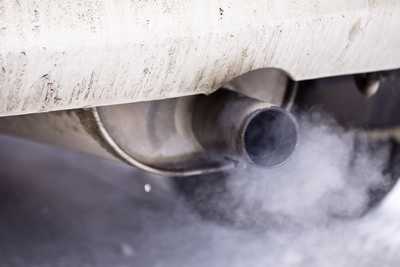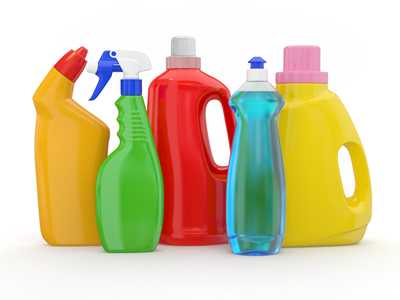INDOOR ENVIRONMENTAL QUALITY
Chemicals and Odors

Chemicals and related odors can be sources of IEQ problems in buildings. Odors are organic or inorganic compounds and can be both pleasant and unpleasant. Some odors can be health hazards and some are not. While most chemical contaminants originate from within the building, chemicals can be drawn into a building from the outdoors as well.
Reducing exposure to chemicals in the workplace is a preventative action that can lead to improved outcomes for both worker health and to the environment.
Chemical Contaminant Sources
There are a variety of chemical contaminants found in a variety of sources. Volatile organic compounds (VOCs) are common chemical contaminants found in office and home environments and are a source of odors. VOCs are organic (containing carbon) chemicals that can easily evaporate into the air. Many products found in the office environment may have the potential to release VOCs. Examples include:
- Caulks, sealants, and coatings
- Adhesives
- Paints, varnishes and/or stains
- Wall coverings
- Cleaning agents
- Fuels and combustion products
- Carpeting
- Vinyl flooring
- Fabric materials & furnishings
- Air fresheners and other scented products
- Personal products of employees like perfume, shampoos, etc.
If these and other chemical contaminant sources are not controlled, indoor environmental quality problems can arise, even if the building’s ventilation system is properly designed and well maintained. Some examples of building related chemicals, odors, and their sources are listed below:
Contaminated Outdoor Air

- General air pollutants (oxides of sulfur and nitrogen, ozone, others)
- General vehicle exhaust (carbon monoxide, oxides of nitrogen)
- Exhaust from gasoline and/or diesel powered vehicles on nearby roads or in parking lots, or garages (carbon monoxide, oxides of nitrogen)
- Odors from dumpsters
- Exhaust from the neighboring buildings (VOCs and odors)
- Unsanitary debris near the building’s outdoor air intake (various odors)
Soil Emissions
- Radon (odorless and not visible)
- Leakage from underground fuel tanks (gasoline or solvent odors)
- Contaminants from previous uses of the site (e.g., methane)
- Pesticides
Building Emissions

Indoor
- Bioaerosols from water damage, microbial VOCs (VOCs from fungi)
- Emissions from office equipment (VOCs, ozone)
- Emissions from stored supplies (solvents, toners, ammonia, chlorine)
- Emissions from building carpet, furnishings, and other building components (VOCs including formaldehyde from glues, fabric treatments, stains and varnishes)
- Emissions from special use areas within the building such as laboratories, print shops, art rooms, smoking lounges, beauty salons, food preparation areas, and others (various chemicals and related odors)
- Emissions from indoor construction activities (VOCs from use of paint, caulk, adhesives, and other products)
- Elevator motors and other building mechanical systems (solvents and other chemicals)
- Plumbing problems (sewer odors, improper bathroom ventilation)
- Emissions from housekeeping / cleaning activities (ammonia, chlorine, and other cleaning agents such as detergent, dust residual from carpet shampoo, and disinfectants)
- Use of deodorizers and fragrances
- Emissions from pesticide use inside the building
- Accidental events such as spills inside the building
- Emissions from stored trash inside the building
- Fire damage inside the building (soot, polychlorinated biphenyls from electrical equipment, odors)

Outdoor
- Loading docks (vehicle exhausts, chemical spills)
- Emissions from pesticide use outside the building
- Emissions from outdoor construction activities (VOCs from roofing chemicals, and other products)
- Accidental events such as spills outside the building
- Fire damage outside the building
Emissions from Building Occupants
Potentially hazardous
- Smoking
- Cooking odors
- Cosmetic odors
- Increased levels of carbon dioxide
Unpleasant
- Body odor
- Page last reviewed: May 17, 2013
- Page last updated: November 3, 2015
- Content source:
- National Institute for Occupational Safety and Health Respiratory Health Division


 ShareCompartir
ShareCompartir